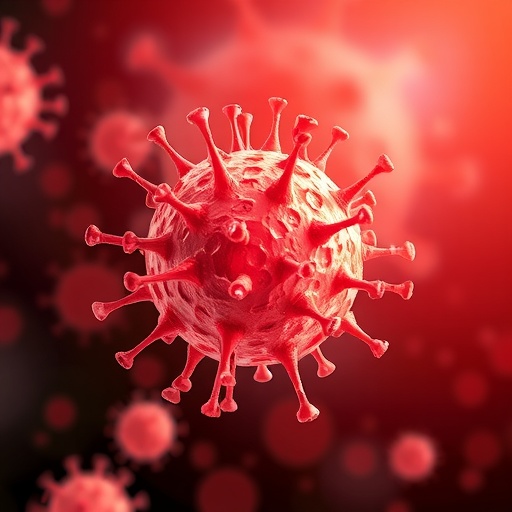A groundbreaking study published in Nature reveals a transformative approach to boosting the efficacy of CAR T cell therapies through targeted gene knockouts enabled by CRISPR technology. Researchers systematically identified and validated specific gene knockouts that significantly enhance the cancer-fighting potential of CAR T cells, the engineered immune cells that have revolutionized treatment for certain blood cancers. This advance promises to address major clinical hurdles, including relapse and insufficient tumor clearance, heralding a new era of next-generation immunotherapies.
The investigators conducted rigorous in vivo experiments involving immunodeficient NSG mice engineered to develop human B cell leukemia via injection of luciferase-expressing NALM6 cells. This model allowed real-time tracking of leukemic burden through bioluminescence imaging, providing quantifiable metrics of therapeutic response. Reducing the CAR T cell dosing to a deliberately suboptimal 0.6 million cells further tested the robustness of gene knockout strategies under challenging conditions.
Among the top-performing targets, knockout of the RHOG gene emerged as particularly potent. RHOG-knockout CAR T cells demonstrated superior leukemia clearance and strikingly prolonged survival in treated mice compared to standard CAR T cells. These findings were consistent across multiple donor-derived CAR T cell products, underlining the robustness and reproducibility of the approach. RHOG, a small GTPase implicated in cytoskeletal dynamics and cell migration, appears to exert a profound influence on T cell function when ablated.
The study also revisited PRDM1 knockout, previously reported to enhance initial tumor clearance. Although PRDM1-knockout CAR T cells facilitated rapid initial reduction of leukemic cells, they failed to sustain long-term remission or delay relapse effectively. This contrasts with RHOG knockout, which conferred durable responses and significant survival advantages, emphasizing the need for in vivo validation beyond early responses.
In parallel, the team evaluated FAS knockout, leveraging top guides selected from comprehensive CRISPR screens and utilizing ribonucleoprotein electroporation for gene editing. FAS-knockout CAR T cells outperformed their unedited counterparts, aligning with prior studies that underscored the role of FAS-FAS ligand signaling in modulating CAR T cell persistence. This knockout is undergoing clinical evaluation in ovarian cancer trials, reflecting its translational potential.
Remarkably, the dual knockout of RHOG and FAS produced synergistic effects, with markedly improved leukemic clearance and survival outcomes surpassing those of either single knockout alone. This combinatorial approach resulted in curative efficacy in some treated mice within an otherwise fatal leukemia model. Importantly, relapsed leukemias retained CD19 expression, indicating that antigen loss was not a mechanism of therapeutic failure in these experiments.
The safety profile of CRISPR-enhanced CAR T cells was also addressed through extended observation periods up to over a year post-infusion, revealing no evidence of malignant transformation or adverse events attributable to gene editing. Such long-term safety data are crucial for the clinical translation of genome-edited cellular therapies and have been a critical regulatory concern.
Beyond B cell malignancies, RHOG knockout consistently bolstered CAR T cell expansion in vitro and improved tumor clearance across diverse CAR constructs targeting different antigens, including GD2 and GPC3, and associated signaling domains (19-BBz, 19-28z, and GD2-BBz). This broad applicability underscores RHOG’s central role in T cell biology and its potential as a universal enhancer of CAR T cell efficacy.
Furthermore, the combination of RHOG and FAS knockouts enhanced anti-tumor activity in a solid tumor model involving Huh7 cancer cells, showcasing the feasibility of this gene editing strategy beyond hematologic cancers. Overcoming the challenges of solid tumor immunotherapy remains a major frontier, and these results offer promising avenues for intervention.
Central memory T cell populations (CD45RO+CD62L+) increased among RHOG-knockout CAR T cells following repeated antigen stimulation in vitro, suggesting improved T cell persistence and functionality. These attributes are often correlated with enhanced clinical efficacy in adoptive cell therapies, highlighting mechanistic insights into how RHOG knockout confers therapeutic advantage.
The in vivo expansion of both CD4+ and CD8+ CAR T cells was significantly augmented following RHOG knockout, confirming improved cellular proliferation or survival post-infusion. Notably, exhaustion marker expression (PD-1, LAG3, TIM3, TIGIT) on RHOG-knockout CAR T cells was not significantly different from standard CAR T cells, indicating that enhanced expansion was not due to reduced exhaustion but likely other intrinsic functional improvements.
This landmark study systematically establishes RHOG knockout, alone or in combination with FAS knockout, as a powerful CRISPR-boosted strategy to enhance CAR T cell immunotherapy. The meticulous validation across multiple models, dosages, CAR designs, and tumor types enhances confidence that these modifications could translate into substantial clinical benefit.
By providing comprehensive mechanistic insights alongside rigorous preclinical validation, this research opens new paths to potentially overcoming the current limitations of CAR T cell therapies. As gene editing technologies advance and regulatory pathways evolve, such sophisticated combinatorial knockout strategies may soon enter clinical trials, offering hope for more durable and effective cancer immunotherapies.
The convergence of CRISPR gene editing with adoptive cell therapy exemplifies the future of precision immuno-oncology, where the immune system’s power can be fine-tuned at the genomic level to maximize therapeutic impact. Continued exploration of additional gene targets and synergistic combinations will likely further refine this therapeutic platform, ultimately aiming to deliver more reliable cures for diverse malignancies.
Subject of Research:
Systematic identification and validation of gene knockouts to enhance the efficacy of chimeric antigen receptor (CAR) T cell immunotherapies using CRISPR technology.
Article Title:
Systematic discovery of CRISPR-boosted CAR T cell immunotherapies.
Article References:
Datlinger, P., Pankevich, E.V., Arnold, C.D. et al. Systematic discovery of CRISPR-boosted CAR T cell immunotherapies. Nature (2025). https://doi.org/10.1038/s41586-025-09507-9




